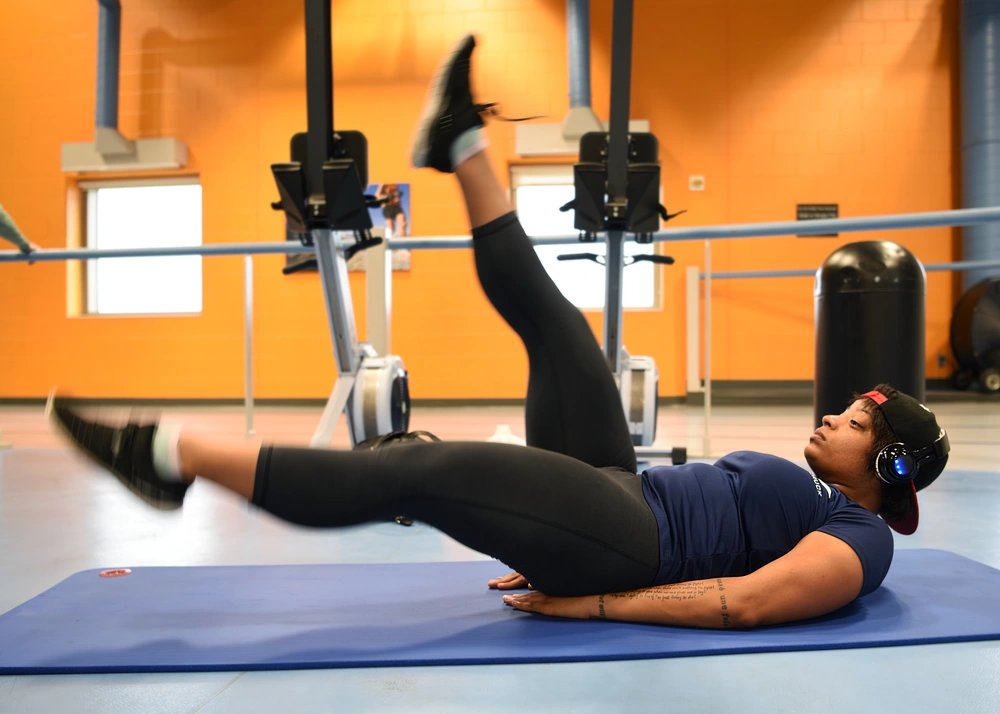Want to know the best workout routine in existence? Trick question, there is no such thing. With so many factors involved such as individual genetics, time, available equipment, age, and goals, there is no “best” routine as it pertains to exercise. In a military family, scheduling is often a top contender for the biggest challenge we face. Because of this, scheduling exercise time can be difficult, to say the least. I know it is for me and my whole career revolves around the fitness industry.
I have spent years experimenting with different routines and splits. I am constantly researching new and even older approaches to maintaining physical fitness. Balancing fatigue and recovery with time and effectiveness is always the goal. As a former first responder, I understand the higher the stress, the worse the recovery will be. As a result of the years of training, knowledge and experience, I have come up with a couple of routines I refer to collectively as “Easy 3.”
The three comes from the fact that you will perform three sets for three movements, three days per week. The easy bit comes from… well… it’s pretty simple. Now, there are two different ways you can do this. The three sessions can be broken up into different muscle groups or full-body routines. Each has its benefits based on goals and personal preferences. This is true for any exercise program.
First, I’ll explain how to separate muscle groups:
– A push or press generally refers to any muscle used to, you guessed it, push or press things. The triceps, shoulders, and chest muscles are the main focus here. Movements like the bench press, overhead press, and dips are good examples.
– Pulling movements will target back muscles and the biceps. Performing movements like pull-ups and rowing variants will ensure you build a strong back while some good old-fashioned bicep curls will keep those sleeves stretching.
– Leg movements will involve a squat or a hip hinge (deadlift) variation. So quads, hamstrings, hips, etc., will be the focus. Oh, and calves too.
PPL training
Some people like to separate the muscle groups into different sessions. For those of you who enjoy this style of training, I recommend a push/pull/legs (PPL) split. This will allow you to focus on one muscle group per session. For this type of split, you will choose three movements that fit the goal for that day. For example, let’s say you are planning a push day. It may look something like this:
Bench press – 3 sets
Overhead press – 3 sets
Dips – 3 sets
In the example, notice I have used three compound movements. Compound movements are also known as multi-joint movements. They require more than one joint to move. Try to use compound movements for at least two-thirds of the exercises. If you want to perform an isolation movement like a fly or tricep extension, make sure you are targeting a lagging body part.
Full Body Training

For those of you more interested in full-body training, many of the same rules apply with the exception that all three movements should be multi-joint. The added benefit of full-body training is the ability to change the focus each session. You may want to work on strength on Monday, hypertrophy on Wednesday, and focus on metabolic conditioning on Friday. Just make sure to choose movements that will allow the whole body to be worked. Choosing one push, one pull, and one lower body movement will do the trick. A full-body day might look like this:
Overhead press – 3 sets
Pull-ups – 3 sets
Goblet squats – 3 sets
The rep scheme is up to you. For push/pull/legs splits, the rep schemes can vary from movement to movement. For full-body days, the overall theme of each session should remain consistent. In other words, if the goal for your first movement on a full body day is five to eight reps, try to keep the other two movements that day in the same rep range. And remember, you don’t need to lift free weights for each movement. You can substitute in body weight movements like push-ups or air squats if you want.
“But Toby, what about cardio?” Cardio can be done after lifting weights. Doing 30-45 minutes based on individual goals should do the trick.
There will never be a universally perfect exercise routine. There are far too many variables for that to happen. These tips and examples are for those of us who face the perpetual time crunch, whose schedules are at the mercy of Uncle Sam. With the stressors we face daily, it’s important for us to stay in shape. After all, you never know what life’s next challenge may bring.


